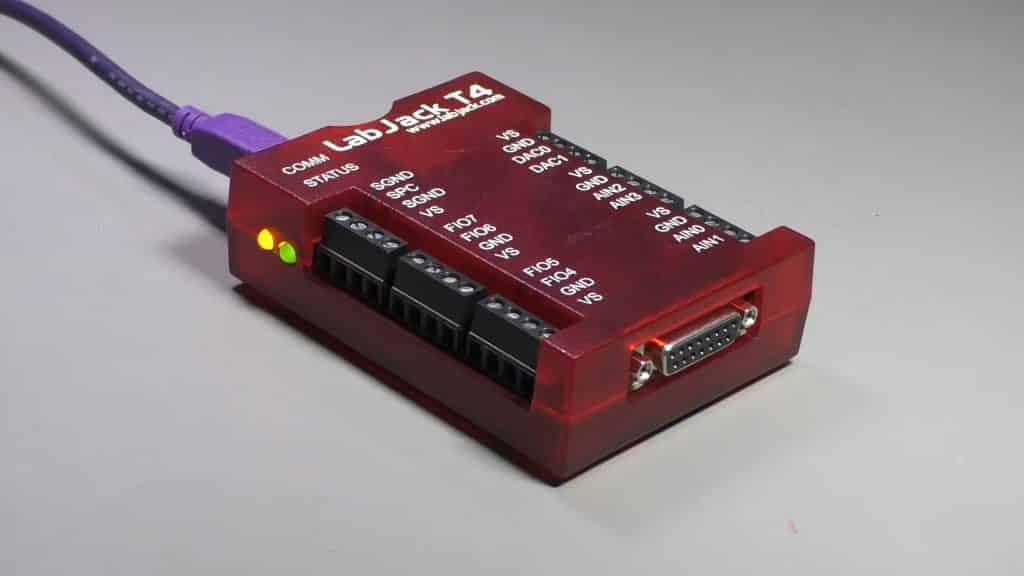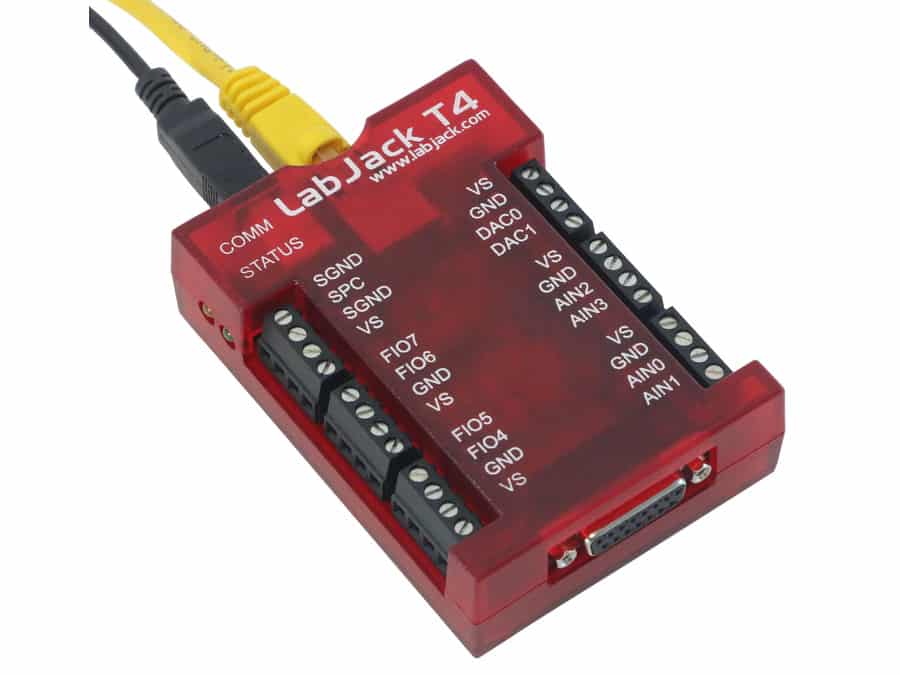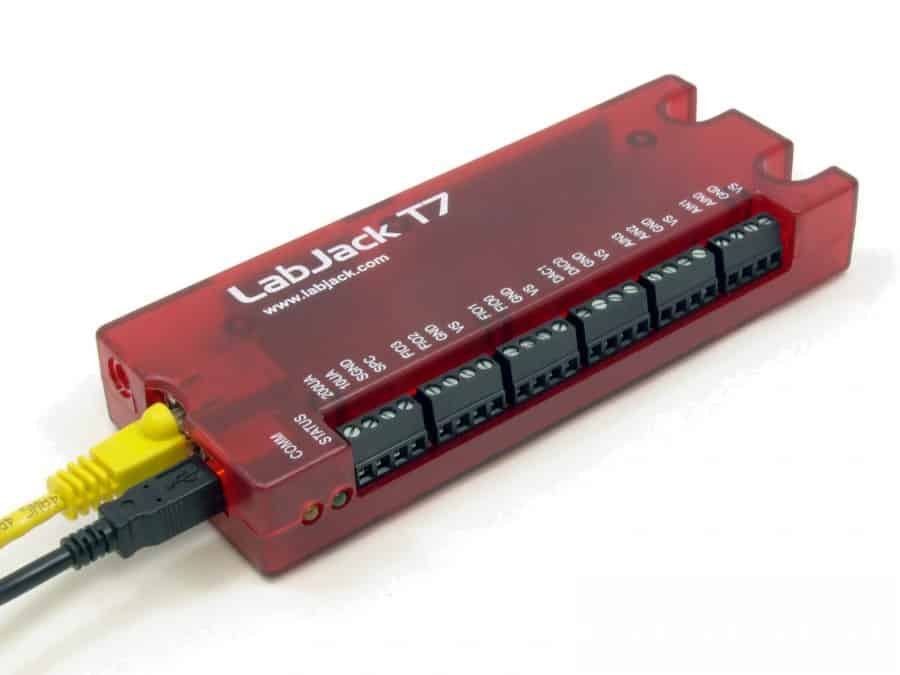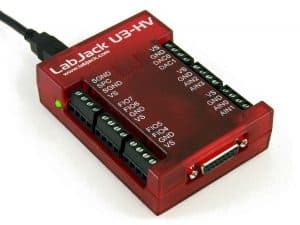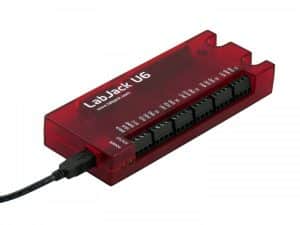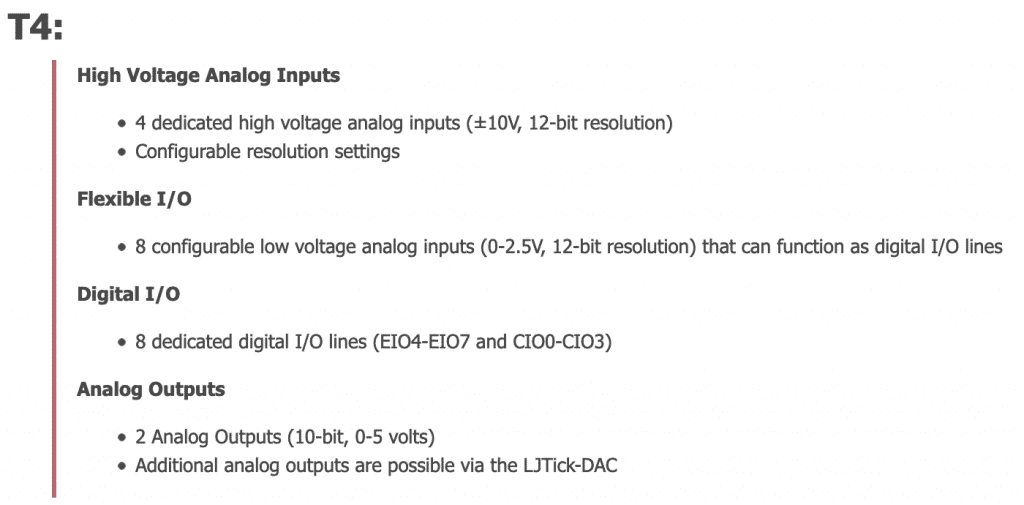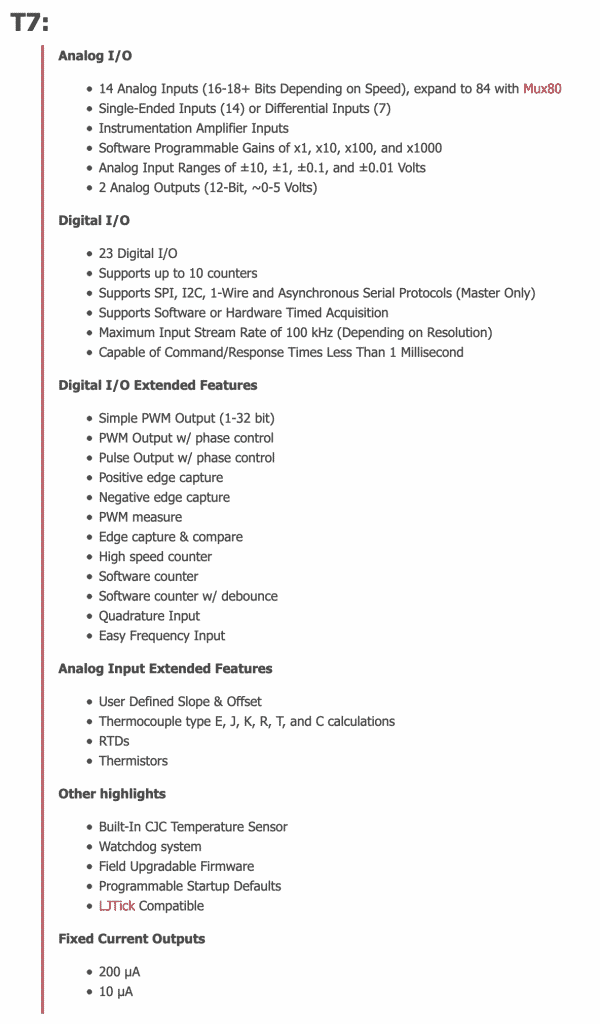Next in line in terms of price and capabilities are the LabJack U3 and LabJack U6 devices.
The U3 and U6 are very similar to T7 and T4, but they lack two important capabilities:
1. They only offer USB connectivity.
2. There is no Modbus server.
3. They don't have the ability to run Lua scripts on-board.
There is one U-series device, the LabJack UE9, which offers Ethernet capability.
I'm will to focus on the LabJack T7 and LabJack T4, as these two are the most popular LabJack devices.
You can find detailed information on the features of these devices in the documentation, Section 1.1.
The LabJack T7 stands out against the T4 because of the larger number of ports that it contains. The T7 is a much larger device, physically, when compared to the T4.
The T7 has more analog inputs/outputs, more digital input/output, and more extended features. It can also perform more accurate measurements because of its higher resolution. You can see here in the documentation that the T7 has two DACs, and they have a resolution of 12 bits each. On the T4, the DAC has a resolution of 10 bit.
Worth noting is that there are two variants of the LabJack T7: T7 and T7 Pro. The T7 Pro has the capabilities of the T7 with the addition of WiFi, 24-bit low-speed sigma-delta ADC, a real-time clock with battery support (great for data logging), and an SD-card reader (also useful for data logging).
Here's a consise listing of the differences between LabJack T4, T7, and T7 Pro.
In the next lesson I will focus on the T4 specifications and get a closer look at this device since it is the one I'll be using.
